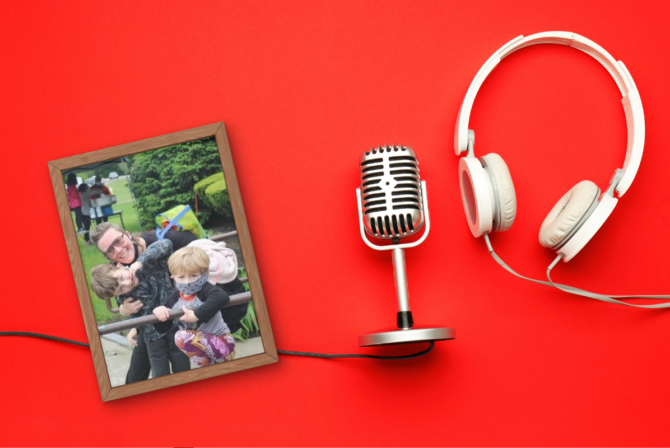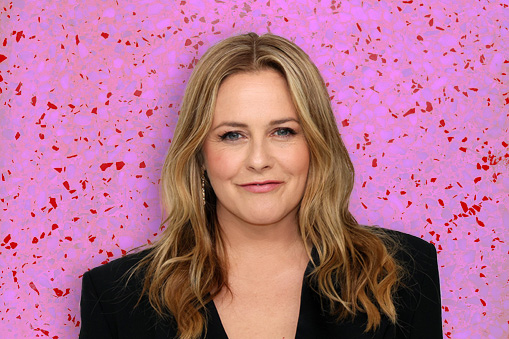“Well, that’s just the consequences of someone with your condition getting pregnant.”
Those words, from the Director of Obstetrics, had me in tears. This woman—this doctor who I had never met in person—had called me on the phone and made me feel like I was the most selfish person in the world. I had just found that I would not be able to get my usual treatment while pregnant. When I exclaimed, “What am I going to do?” her response was to shame me for being pregnant at all.
I have cerebral palsy (CP). I’ve had CP since I was 1 year old, and though my case is very mild, this disease has painted the backdrop to my life. Not all CP is created equal. Cerebral Palsy covers a spectrum of conditions that range from muscle spasms to nerve pain to an inability to extend limbs and more.
The condition affects different parts of the body for different people. I have Spastic Diplegia, which only affects my calves in the form of muscle spasms and nerve pain. My symptoms are not visible, and you would probably not know about my condition unless I told you. In my experience, this is the most typical type of CP that women who experience childbirth have; however, I have met many strong women whose CP manifestations are much more severe.
When my husband and I decided it was time to start a family, we knew we would be facing some challenges along the way, but we didn’t know exactly what to expect. And we certainly weren’t doing anything wrong. Here are nine things we learned along the way:
1. I was automatically labeled “high risk,” because of my medical history. Even though initially there were no other concerns, pregnancy causes a lot of stress on a normal person’s body, and the addition of Cerebral Palsy caused (or may have caused) a lot more complications for me as my pregnancy progressed.
2. I was the first patient with the condition my OB has ever treated. When I was first pregnant I didn’t know anyone else who had ever been in my shoes. In fact, as I was doing research, I found that not a lot of thought is given to adults living with Cerebral Palsy at all, much less pregnant adults with CP. This made me somewhat of a science experiment to my OB who was always asking me about how my experience might be different than most of his patients.
3. I was not allowed to receive my usual CP treatment while pregnant. I manage my Cerebral Palsy with Botox injections. Botox, which would seem like a safe option, has never been tested on pregnant women. In fact, many women have to forgo their usual health treatments as doctors are unwilling to make pregnant women test subjects.
So how did I cope? Stretching, acupuncture, and chiropractic were my treatments, and as the pregnancy progressed, stretching went by the wayside. I got acupuncture twice a week and chiropractic once a week for the entirety of my pregnancy.
4. Oh yeah, I couldn’t get treatment while breastfeeding either. Same reasons, different situation, except this time I had a tiny baby to look after, and couldn’t simply go to acupuncture twice a week. Instead, I was put on a medication described to me as a “failed anti-depressant” from the ‘70s, which was later discovered to help alleviate nerve pain, and was safe for nursing. It worked OK for a while, until I started getting panic attacks (I guess that’s what “failed anti-depressant” means).
And even though my pain was lessened, I still had regular muscle spasms. I remained on the medication until I stopped breastfeeding when my baby was 9 months, and I am so glad to be off of it.
5. I felt uncomfortable doing pre-natal yoga and birthing classes. Prenatal yoga would have helped a lot, but I could never get myself to go. Yoga instructors are not doctors or Cerebral Palsy experts, and my non-pregnant yoga experiences have always ended in the instructor trying to stretch me beyond my limit, causing my legs to spasm and the instructor to get kicked in the face.
When my husband and I attended a birthing class, the teacher had all the couples sit on the floor. I knew there was just no way I could do it, and had to awkwardly watch couples in their support poses. I cried all the way home. I couldn’t understand how all those women were able to get in those positions, or how I was actually going birth this baby.
6. I felt lonely. I’m an extrovert. I love spending time with my friends; I love attending functions; I love eating out. However, once my third trimester rolled around, I couldn’t walk. We lived in a canyon, and although our house wasn’t that far from our friends, it felt far to them. Being stuck at home with not many visitors is absolutely the pits, especially for someone like me. It was a time I felt I could most use a girlfriend, and kept coming up wanting.
7. I had limited options of how I could give birth. There are some women with CP who give birth naturally, but I was not one of those women. I had to have an epidural to keep my legs from spasming, and eventually ended up in an emergency C-section.
8. My epidural did not take. I had two epidurals, and neither one of them did a bit of good to keep me out of pain during my 57 hours of labor (yes, I said 57 HOURS). Because I have nerve damage, there was an epidural misfiring and I felt everything.
9. I would do it all over again. When I was pregnant, someone said to me, “You don’t know—you’re not a mother yet.” I was livid. This person had no idea the amount of sacrifices I had already willingly suffered for the love of my little one. My pregnancy was wrought with pain and my birth story is even worse, but when I see my son smile, I’d do it all again 10 times over. He is so worth it.
To all the other disabled pregnant mamas out there: You are not alone! Hang in there. The journey is long and difficult, but the payoff so very sweet.
Read More:
Yes, I’m a Democrat Married to a Republican
Mayim Bialik: Why I Support This Mental Health Organization & You Should Too
Why This Rabbi Uses Martial Arts to Help Kids with Cancer







